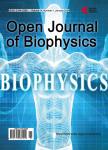Multispectral Imaging in Combination with Multivariate Analysis Discriminates Selenite Induced Cataractous Lenses from Healthy Lenses of Sprague-Dawley Rats
Multispectral Imaging in Combination with Multivariate Analysis Discriminates Selenite Induced Cataractous Lenses from Healthy Lenses of Sprague-Dawley Rats作者机构:Laser and Fibre Optics Centre (LAFOC) Department of Physics School of Physical Sciences College of Agriculture and Natural Sciences University of Cape Coast Cape Coast Ghana Department of Optometry School of Allied Health Sciences College of Health and Allied Sciences University of Cape Coast Cape Coast Ghana
出 版 物:《Open Journal of Biophysics》 (生物物理学期刊(英文))
年 卷 期:2017年第7卷第3期
页 面:145-156页
学科分类:1002[医学-临床医学] 100214[医学-肿瘤学] 10[医学]
主 题:Multispectral Imaging Cataractous Lenses Principal Component Analysis Fisher’s Linear Discriminant Analysis
摘 要:Cataracts are the leading cause of blindness worldwide. Current methods for discriminating cataractous lenses from healthy lenses of Sprague-Dawley rats during preclinical studies are based on either histopathological or clinical assessments which are weakened by subjectivity. In this work, both cataractous and healthy lens tissues of Sprague-Dawley rats were studied using multispectral imaging technique in combination with multivariate analysis. Multispectral images were captured in transmission, reflection and scattering modes. In all, five spectral bands were found to be markers for discriminating cataractous lenses from healthy lenses;470 nm and 625 nm discriminated in reflection mode whereas 435 nm, 590 nm and 700 nm discriminated in transmission mode. With Fisher’s Linear discriminant analysis, the midpoints for classifying cataractous from healthy lenses were found to be 14.718 × 10−14 and 3.2374 × 10−14 for the two spectra bands in the reflection mode and the three spectral bands in the transmission mode respectively. Images in scattering mode did not show significant discrimination. These spectral bands in reflection and transmission modes may offer potential diagnostic markers for discriminating cataractous lenses from healthy lenses thereby promising multispectral imaging applications for characterizing cataractous and healthy lenses.



